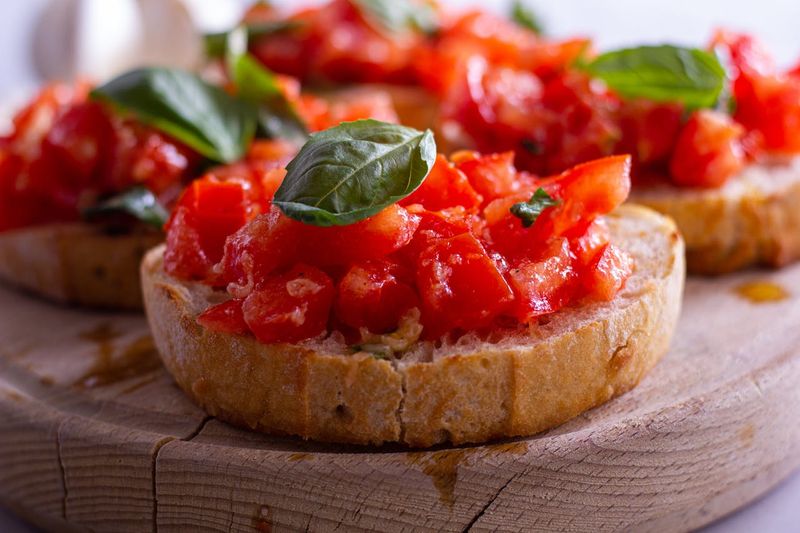Bruschetta is a timeless Italian classic that effortlessly captures the essence of high-end dining. Join us as we explore the nuances of this appetizing delicacy, a symphony of flavors that will elevate your palate to new heights.
But before delving deeper on how Bruschetta is made let transcend back in history to know where this devourable dish finds its root from.
The roots of Bruschetta can be traced back to the rustic kitchens of central Italy, particularly in the regions of Tuscany and Umbria. The name "Bruschetta" itself is derived from the Italian verb "bruscare," meaning "to roast over coals" or "to toast." This etymology unveils the humble beginnings of this dish, rooted in the age-old practice of toasting bread over an open flame.
In its earliest form, Bruschetta was a frugal creation—a peasant's delight born out of necessity. The primary purpose was to utilize stale bread, transforming it into a flavorful and satisfying dish. Bread, a staple of Italian cuisine, became a canvas for creativity as communities sought to make the most of their resources.
The traditional method involved grilling slices of bread over an open flame until they achieved a golden hue and a delightful crunch. Once toasted, the bread was rubbed with fresh garlic, imbuing it with a subtle yet distinctive aroma. The final touch was the addition of ripe, juicy tomatoes, freshly plucked basil, and a drizzle of extra-virgin olive oil—a celebration of the bountiful harvest that blessed the Italian countryside.
Over time, Bruschetta transcended its humble origins and found its way into the hearts of gourmands and culinary enthusiasts worldwide. As Italian cuisine gained international acclaim, so did this simple yet captivating dish. Chefs and home cooks alike began experimenting with variations, introducing ingredients like mozzarella, prosciutto, and balsamic glaze to add layers of complexity to the classic recipe.
Today, Bruschetta has become a versatile canvas for culinary expression, adapting to diverse tastes and preferences. Whether served as an appetizer, a light lunch, or a sophisticated hors d'oeuvre at elegant gatherings.
Ingredients required to make Bruschetta

- Bread
- Tomatoes
- Fresh basil leaves
- Garlic cloves
- Extra-virgin olive oil
- Sea salt
- Balsamic glaze
- Black pepper
Bruschetta recipe

Preparation of Bread
- Slice the artisanal bread into desired thickness.
- Toast the bread slices to a golden perfection.
Garlic infusion
- While the bread is still warm, rub each slice with a fresh garlic clove.
- This imparts a subtle garlic flavor, enhancing the overall taste.
Tomato basil topping
- Dice the ripe tomatoes into small, uniform pieces.
- Chop fresh basil leaves finely.
- In a bowl, combine tomatoes and basil.
- Drizzle extra-virgin olive oil over the mixture.
- Season with a pinch of sea salt.
- Gently toss the ingredients to ensure an even distribution.
Assembling the Bruschetta
- Spoon the tomato and basil mixture generously onto each garlic-infused bread slice.
- Arrange the bruschetta on a pristine platter.
- Drizzle a thread of balsamic glaze over the top for a touch of sweetness and visual appeal.
- Finish with a flourish of freshly cracked black pepper.
Pairing suggestions
- Serve with a chilled glass of Prosecco or a light Pinot Grigio for a truly refined experience.
Savor the moment
- Take a moment to appreciate the artful presentation and the symphony of flavors.
- Indulge in the sophistication of each bite, relishing the high-end gastronomic journey.





